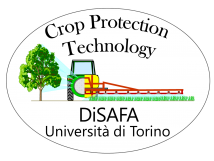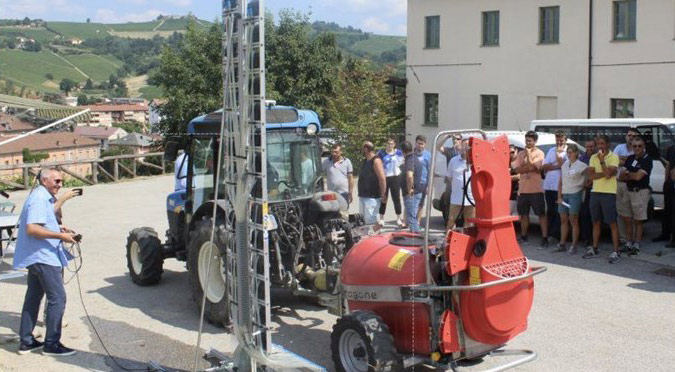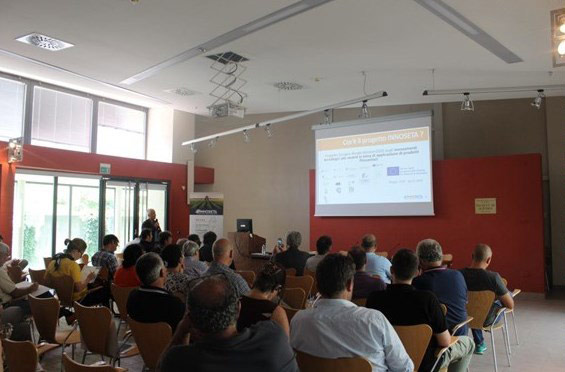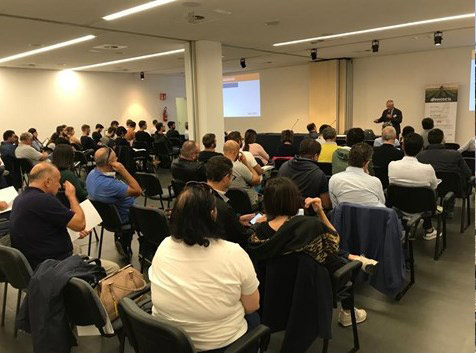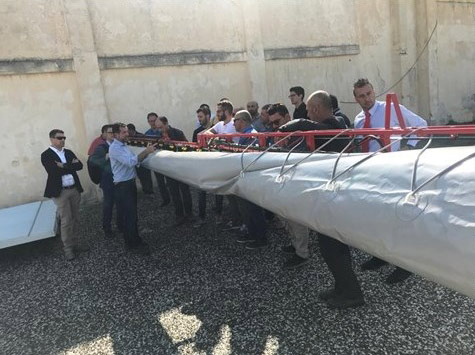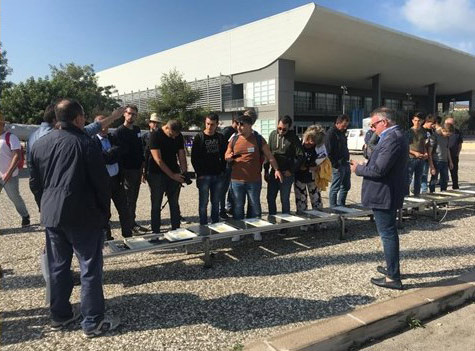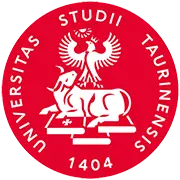European projects
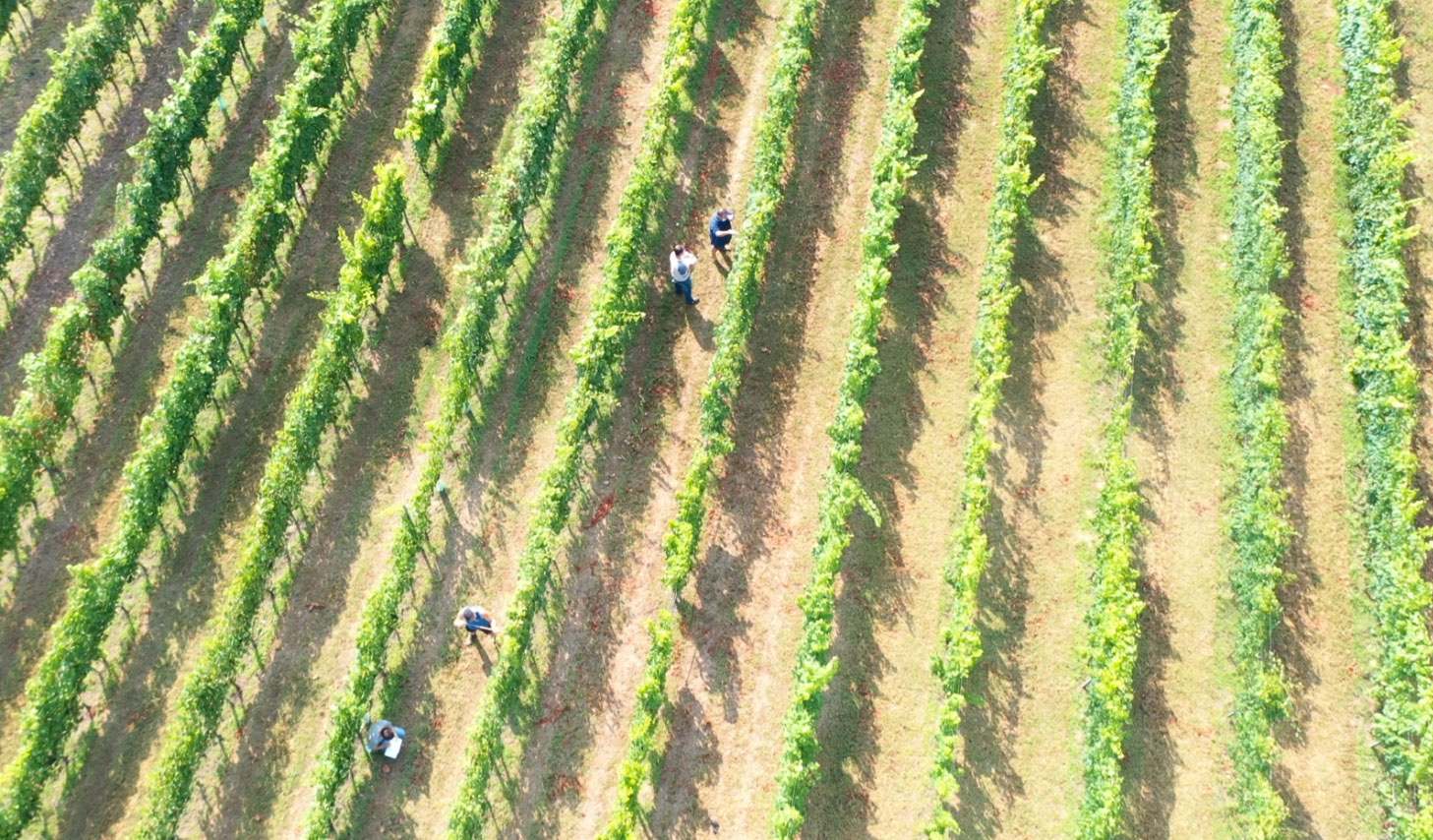
Project Horizon Europe "RENOVATE: Development of an easy-to-use interactive platform to renovate training experiences and networking for farmers in the field of sustainable crop management" - to start
The RENOVATE project, spanning four years (2024-2028), aims to develop an engaging knowledge-sharing platform tailored for farmers and agro-foresters. This platform will offer exclusive access to a wide array of both new and existing training tools and revamped educational programs.
The primary objective of this platform is to foster the exchange of practical knowledge and enhance farmers’ capabilities in achieving sustainable crop management through the adoption of innovative practices. Leveraging captivating technologies such as serious games and gamified content, the RENOVATE Platform will serve as a centralized hub for farmers, agro-foresters, and advisors. It will provide them with access to new and existing training resources, legislative information, best practices, and practical data—including cost information—pertaining to the optimization of Plant Protection practices.
To enrich the platform, RENOVATE will integrate resources from tools and materials developed in previous EU projects, including contributions from 14 EIP Agri Operational Groups. Additionally, RENOVATE will spearhead 15 distinct Advanced Knowledge Transfer Actions (AKTAs) across Europe, generating practical knowledge ready for dissemination through the platform.
Aligned with key policy frameworks such as the Green Deal, the Farm to Fork Strategy, the new Common Agricultural Policy (CAP), and the UN Sustainable Development Goals for 2030, RENOVATE aims to address pressing agricultural challenges while promoting sustainability.
The consortium comprises 16 partners from 8 EU countries, collaborating over the course of 48 months. The RENOVATE platform, envisioned as a premier source for practical knowledge sharing and training materials, is expected to emerge as a benchmark for local and national administrations. It will encourage local farmers and agro-foresters to embrace innovation and adopt new technologies for sustainable crop management.
Projects funded by EFSA (European Food Safety Authority)
Evaluation of new evidence on Non-Dietary Exposure to Plant Protection Products – in progress (2023-2024)
Advancing the ERA of Plant Protection Products towards a system-based approach – to start (2024-2028)
PPP exposure model for 3D orchards considering spraying technologies in Southern Europe – completed
Tree orchards, including citrus, olives, apricot, peach, and nuts, often referred to as 3D orchards, are prevalent crops in Southern Europe (SEU) and exhibit distinct vegetation characteristics (tree size, shape, foliar density, etc.) as well as unique training systems and row and tree spacing compared to apple and pear orchards more typical of Central and Northern Europe. Furthermore, the application techniques for plant protection products (PPP) and their setup differ significantly between these regions, compounded by the considerable climatic variations between Northern and Southern Europe.
These differences lead to markedly distinct PPP exposure scenarios compared to those currently used for risk assessment of pesticides, which often rely on models developed for agro-climatic conditions typical of Northern Europe.
To address the multidisciplinary and specific nature of this topic, a consortium with expertise in relevant fields has been assembled. The project, funded by EFSA, aims to characterize the distribution of 3D crops in Europe, focusing on those present in SEU. It involves gathering information on equipment usage, crop training systems, and pesticide practices through dedicated surveys targeting farmers, sprayer inspection stations, and manufacturers.
Additionally, a literature search has been conducted to identify studies specifically designed for 3D orchards in the agro-climatic conditions of Southern Europe, particularly regarding drift and exposure models. From the limited relevant articles identified, discrepancies between current practices and observations in Southern 3D orchards have been noted, challenging the prevailing “worst-case” approach.
Another critical finding from the literature search, which could significantly impact risk assessment procedures, is the importance of measuring not only sedimenting drift but also airborne spray drift. Several studies have reported higher values for airborne drift compared to ground-level measurements taken at the same downwind sampling distance.
For more informations click here
Life PERFECT Project - completed
The overarching objective of the European LIFE project PERFECT, spanning four years from 01/09/2018 to 31/08/2022 (extended to 31/02/2023), was to demonstrate the reduction of environmental contamination caused by pesticides and their metabolites in the air. This was achieved through the utilization of Optimal Volume Rate Adjustment tools (OVRA) and drift-reducing tools (SDRT), ultimately leading to a decrease in pesticide-related risks for fauna, flora, and humans.
In addition to implementing OVRA and SDRT, the project aimed to develop a novel ultra-fast, sensitive, and time-resolved technology for analyzing pesticides. This technology would enable the assessment of pesticide application from a health perspective, particularly in real agricultural conditions.
Through these combined efforts, PERFECT sought to advance practices that mitigate environmental contamination, minimize risks associated with pesticide exposure, and enhance the overall sustainability of agricultural operations.
In addition to the DISAFA, the participants were:
- Fundación Centro de Estudios Ambientales del Mediterráneo (coordinator)
- Federació Cooperatives Agroalimentàries de la Comunitat Valenciana
- Fundació per al Foment de la Investigació Sanitària i Biomédica de la Comunitat Valenciana
- Institut français de le vigne et du vin
- Instituto Valenciano de Investigaciones Agrarias
- Sociedad Europea de Analisis Diferencial de Movilidad S.L. Universitat Politécnica de Catalunya
For more details visit the project website or follow the Life PERFECT Project on Instagram e Twitter
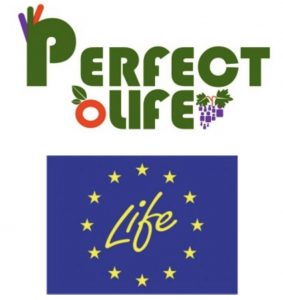
video Perfect – activities carried out and resulats obtained
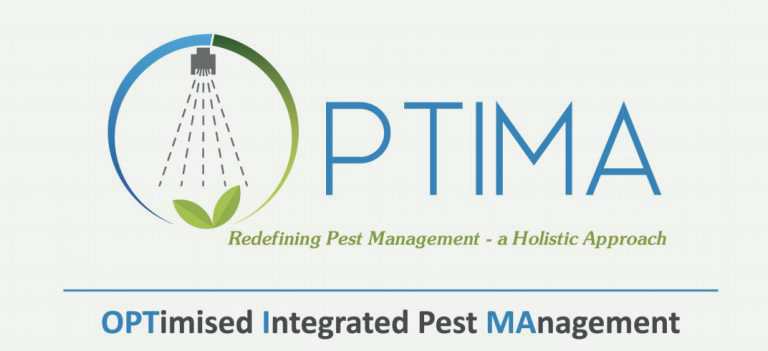
H2020 OPTIMA Project - completed
The European Project OPTIMA (Optimised Pest Integrated Management to precisely detect and control plant diseases in perennial crops and open-field vegetables), funded by the European Commission under the European Framework Program for Research and Innovation (2014 – 2020) HORIZON 2020, was coordinated by the Agricultural University of Athens. In addition to DiSAFA, the project’s partner on the Italian side included Caffini spa and Terredavino company.
The project’s primary objective was to develop “smart” sprayers designed for the precise distribution of plant protection products, thereby ensuring their safe and efficient use.
The resulting new technology will facilitate the precise distribution of plant protection products based on crop requirements, leading to reduced pesticide usage and enhanced production quality while mitigating the risk of environmental contamination. The project’s trials encompassed carrot cultivation in France, apple orchards in Spain, and grapevine cultivation in Italy.
Originally scheduled for 40 months (01/09/2018 – 31/12/2021), the project was extended by an additional 6 months, concluding on June 30, 2022.
For more details follow the project website or follow the OPTIMA project on Linkedin, Twitter, Instagram and Facebook
Click to watch the movie of the field demonstration of the OPTIMA project held on July 7, 2021 at the Pusabren company in Canelli (AT).
TOPPS WATER PROTECTION Projects (2005-2021) - completed
Topps is an acronym (Train Operator to Promote Practice and Sustainability) identified by ECPA (now CropLife Association, european organisation that represents the crop protection sector) for funding and carrying out a series of Projects whose objective is the reduction of water and environmental contamination by phytosanitary products and is carried out in Italy thanks to the collaboration of Agrofarma.
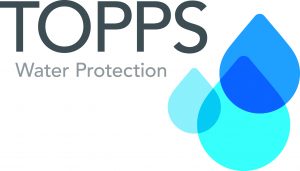
Prof. Paolo Balsari was the South Cluster coordinator of the Life TOPPS (Train the Operators to Prevent pollution from Point Sources) project. This project aimed to establish the guidelines (BMPs) necessary to prevent point contamination of water bodies by plant protection products and their spread through training , dissemination and demonstration activities.

Based on the information acquired under Life TOPPS, the laboratory staff collaborated with a group of European experts, integrated with some sprayer machine manufacturers and plant protection product producers, who designed and implemented a software called EOS (Environmentally Optimised Sprayer). The goal was to provide a computerized tool capable of assessing the environmental compatibility of sprayers according to the technical devices present (or not present) on them
The TOPPS Prowadis Project (Train Operator to Promote Practice and Sustainability to PRotect Water from DIffuse Source) is conducted in Italy the support of two DiSAFA operational units: the first is responsible for developing and disseminating guidelines for protecting water from contamination by plant protection products originating from surface runoff. Meanwhile, the second unit, represented by the Crop Protection Technology Working Group, performs similar tasks and pursues the same objectives but focuses on containing the risk of contamination from drift.
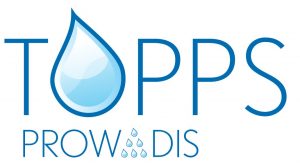
A summary of all BMPs identified for the prevention of point and diffuse (drift) contamination of water bodies by plant protection products is compiled in a specific publication available for free download from the official topps web site.
Detailed informations on training activities conducted can be found on the National training and European Training pages.
The TOPPS Projects concluded in the 2019-2021 period with “TOPPS on farm” and involved 14 European countries (Spain, Italy, France, Belgium, Germany, Poland, the Netherlands, Greece, Romania, Hungary, Slovakia, Slovenia, Portugal, and the Czech Republic). These projects saw collaboration with local partners and the National Associations of Agrochemical Producers (such Agrofarma for Italy).
Training activity, thanks to Agrofarma, will also continue in Italy in the coming years!!
H 2020 INNOSETA Project - completed
The INNOSETA Project. (Innovative Practices for Spraying Equipment, Training and Advising in European agriculture through the Mobilization of Agricultural Knowledge and Innovation Systems) was funded by the European Commission under the “European Framework Program for Research and Innovation HORIZON 2020” and involved 14 European partners including universities, research organizations, sprayer manufacturers’ associations and farmers’ associations.
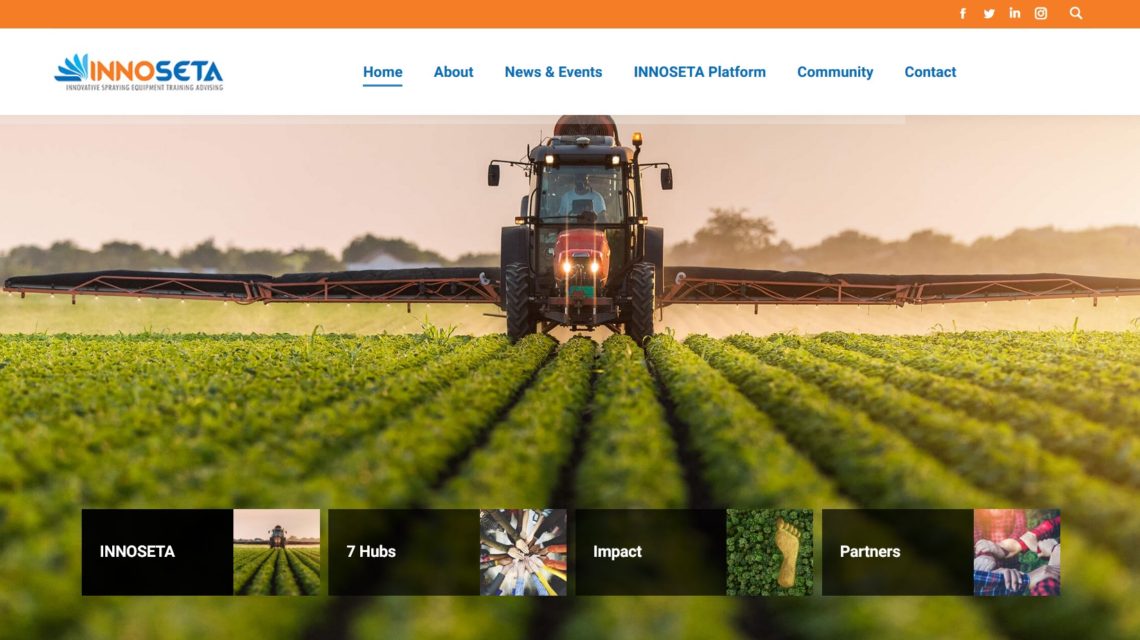
The objective of this project was to establish a self-sustaining and innovative thematic network focused on crop protection and the sustainable use of plant protection products, including sprayers, training, and advisory services. The aim was to bridge the gap between European research projects and their practical implementation by farmers. The project facilitated the exchange of ideas and information among various stakeholders, including industry, academia, research centers, and the agricultural community. This exchange aimed to disseminate existing scientific and commercial solutions, referred to as SETA, and identify industry needs.
Coordinated by the Unitat de Mecanització Agrària del Departament d’Enginyeria Agroalimentària i Biotecnologia at the Universitat Politècnica de Catalunya in Barcelona, the project ran for three years from 01/05/2018 to 30/04/2021, with an extension to 30/10/2021. In Italy, the project involved the participation of the Crop Protection Technology Working Group of DiSAFA and Confagricoltura.
For more details visit the project website or follow the INNOSETA project on Linkedin, Twitter, Facebook, Instagram.
As part of the Innoseta project, the Innoseta Platform was established, serving as a database that is periodically updated and freely accessible to everyone, even after the project’s official conclusion.
At the dissemination level, three workshops were organized in Italy, focusing on presenting innovations in the sector of pesticides distribution. These workshops included:
- A workshop for vine treatments (Ampelion – Alba).
- A workshop for grass crops (Agrilevante – Bari).
- An online workshop for fruit crops.
Approximately 200 farmers, technicians, freelancers, manufacturers of sprayers, and related components participated in these workshops.
You can download the presentations and view which of the solutions presented (SETA) received the highest appreciation from the participants in the vine workshop by clicking here.
You can download the presentations and view which of the solutions presented (SETA) received the highest appreciation from the participants in the grass crops workshop by clicking here .
You can download the presentations and view which of the solutions presented (SETA) received the highest appreciation from the participants in the fruit workshop by clicking here.
ISAFRUIT Project - completed
To address the growing need for environmentally friendly crop defense strategies while minimizing the use of pesticides, laboratory staff collaborated with the Institute of Pomology and Fruit Growing in Skierniewicze (Poland) and the University of Wageningen (Netherlands) as part of the European Project ISAFRUIT (2007-2010). Together, they designed and constructed a prototype orchard sprayere known as the Crop Adapted Sprayer Application (CASA), equipped with various sensors and electronic devices.
These sensors and electronic devices enable the automatic adjustment of pesticide mixture distribution parameters based on several factors, including the plant’s health status, the presence or absence of the target to be treated, its size, and environmental and climatic conditions.
One significant development by the laboratory staff was the Crop Identification System (CIS), which can detect the presence, size, and vegetative intensity of the target plant. The CASA machine utilizes six ultrasonic sensors positioned in groups of three on both sides of the sprayer. This setup enables the machine to recognize the target at different elevations and automatically activate the nozzles in the areas to be treated. Additionally, the sprayer ne adjusts the flow rate based on the thickness and density of the vegetation.
The activation of the nozzles is facilitated by pneumatic valves, while flow rate adjustments are achieved by regulating the working pressure through special valves located near each of the six sections of the sprayer. Furthermore, the sprayer can manage the type and number of active nozzles to optimize the application process.
